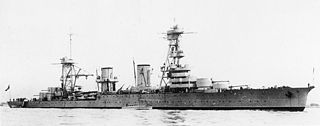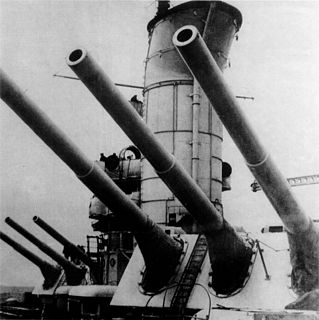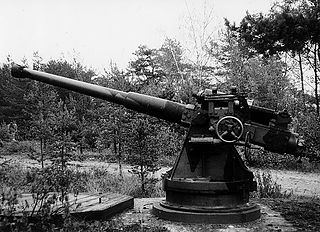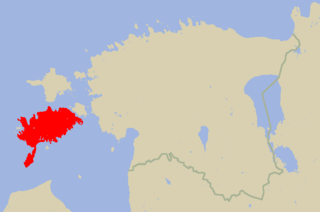
The New Orleans class of protected cruisers of the United States Navy consisted of two ships which were building for the Brazilian Navy at Elswick, near Newcastle Upon Tyne, England, by Armstrong Whitworth. The Brazilian Navy had ordered four Elswick cruisers, but had already sold the first ship during construction to Chile as Ministro Zenteno. One ship was delivered to Brazil, named Almirante Barroso. The third ship was fitting out as Amazonas, and the fourth was on order as Almirante Abreu.

Chervona Ukraina was an Admiral Nakhimov-class light cruiser of the Soviet Navy assigned to the Black Sea Fleet. During World War II, she supported Soviet forces during the Sieges of Odessa and Sevastopol before being sunk at Sevastopol on 12 November 1941 by German aircraft. She was raised in 1947 and was used as a training hulk before becoming a target ship in 1950.

Krasnyi Kavkaz was a cruiser of the Soviet Navy that began construction during World War I, but was still incomplete during the Russian Revolution. Her design was heavily modified by the Soviets and she was completed in 1932. During World War II she supported Soviet troops during the Siege of Odessa, Siege of Sevastopol, and the Kerch-Feodosiya Operation in the winter of 1941—42. She was awarded the Guards title on 3 April 1942. She was reclassified as a training ship in May 1947 before being expended as a target in 1952.

The Obukhovskii 12"/52 Pattern 1907 gun was a 12-inch (305 mm), 52-caliber naval gun. It was the most powerful gun to be mounted aboard battleships of the Imperial Russian Navy and later the Soviet Navy during both world wars. It was later modified by the Soviets and employed as coastal artillery and as a railway gun during World War II.

The Bogatyr class were a group of protected cruisers built for the Imperial Russian Navy. Unusually for the Russian navy, two ships of the class were built for the Baltic Fleet and two ships for the Black Sea Fleet.

The 76-mm air-defense gun M1914/15 was the first Russian purpose built anti-aircraft gun. Adopted during World War I, the gun remained in production until 1934.

The Ordnance QF Hotchkiss 6 pounder gun Mk I and Mk II or QF 6 pounder 8 cwt were a family of long-lived light 57 mm naval guns introduced in 1885 to defend against new, small and fast vessels such as torpedo boats and later submarines. There were many variants produced, often under license which ranged in length from 40 to 58 calibers, but 40 caliber was the most common version.

The QF 3-pounder Hotchkiss or in French use Canon Hotchkiss à tir rapide de 47 mm were a family of long-lived light 47 mm naval guns introduced in 1886 to defend against new, small and fast vessels such as torpedo boats and later submarines. There were many variants produced, often under license which ranged in length from 32 to 50 calibers but 40 caliber was the most common version. They were widely used by the navies of a number of nations and often used by both sides in a conflict. They were also used ashore as coastal defense guns and later as an anti-aircraft gun, whether on improvised or specialized HA/LA mounts.

Komintern was a Soviet light cruiser originally named Pamiat' Merkuria, a Bogatyr-class protected cruiser built for the Imperial Russian Navy. She saw service during World War I in the Black Sea and survived the Russian Civil War, although heavily damaged. She was repaired by the Soviet Navy and put into service as a training cruiser. In 1941 she was reclassified as a minelayer and provided gunfire support and transported troops during the Siege of Odessa, Siege of Sevastopol, and the Kerch-Feodosiya Operation in the winter of 1941—42. She was damaged beyond repair at Poti by a German air attack on 16 July 1942. Afterwards she was disarmed and hulked. At some point she was towed to the mouth of the Khobi river and sunk there as a breakwater on 10 October 1942.

The 130 mm/50 B13 Pattern 1936 was a 130 mm (5.1 in) 50 caliber Soviet naval gun. The gun was used as a standard destroyer weapon during World War II, and it was also used as a coastal gun and railway gun. The gun was produced in three different versions which all had mutually incompatible ammunition and range tables. Mountings for the weapon included single open mounts and twin turrets. Besides the Soviet Union, the gun was used on ships sold or donated to Poland, People's Republic of China, Egypt and Indonesia. Finland captured five guns during Continuation War and used them until the 1990s.

The AK-130 is an automatic naval cannon with a caliber of 130 mm.

The 180mm Pattern 1931-1933 were a family of related naval guns of the Soviet Navy in World War II, which were later modified for coastal artillery and railway artillery roles. They were the primary armament of the Soviet Union's first cruisers built after the Russian Civil War.

The 152mm 45 caliber Pattern 1892 was a Russian naval gun developed in the years before the Russo-Japanese War that armed a variety of warships of the Imperial Russian Navy during the Russo-Japanese War and World War I. Guns salvaged from scrapped ships found a second life on river gunboats of the Soviet Navy during the Russian Civil War and as coastal artillery and railway artillery during World War II. In 1941 it was estimated that there were 196 guns still in use as coastal artillery. After independence in 1917 Finland was estimated to have inherited 100 guns and some remained in use until the 1980s. The last was decommissioned in 2003.

The 203mm 45 caliber Pattern 1892 was a Russian naval gun developed in the years before the Russo-Japanese War that armed a variety of warships of the Imperial Russian Navy during the Russo-Japanese War and World War I. Guns salvaged from scrapped ships found a second life as coastal artillery. It is believed none were in service during World War II.

The 75mm 50 caliber Pattern 1892 was a Russian naval gun developed in the years before the Russo-Japanese War that armed the majority of warships of the Imperial Russian Navy during the Russo-Japanese War and World War I. The majority of ships built or refit between 1890-1922 carried Pattern 1892 guns. During its career the role of the guns evolved from one of anti-torpedo boat defense to coastal artillery and anti-aircraft use.

The Canon de 100 mm Modèle 1891 was a French naval gun developed in the late 1800s that armed a variety of warships before World War I and during World War II. In addition to its naval role it was also deployed as coastal artillery.

The 102mm 60 caliber Pattern 1911 was a Russian naval gun developed in the years before World War I that armed a variety of warships of the Imperial Russian Navy during World War I. Pattern 1911 guns found a second life on river gunboats and armored trains during the Russian Civil War and as coastal artillery during World War II. In 1941 it was estimated that 146 guns were in service. Of these, 49 were in the Baltic Fleet, 30 in the Black Sea Fleet, 30 in the Pacific Fleet, 18 in the Northern Fleet, 9 in the Caspian Flotilla and 6 in the Pinsk Flotilla.

The 203 mm 50 caliber Pattern 1905 was a Russian naval gun developed by Vickers for export in the years before World War I that armed a variety of warships of the Imperial Russian Navy. Guns salvaged from scrapped ships found a second life as coastal artillery, railway artillery and aboard river monitors during the Russian Civil War. By 1941 it was estimated there were 36 coastal defense guns and two railroad mounts remaining. During the 1930s a number were relined down to 180 mm (7.1 in) and re-designated the 180mm Pattern 1931-1933. These guns were used aboard Kirov-class cruisers or as coastal artillery and railway artillery.

The 120 mm 50 caliber Pattern 1905 was a Russian naval gun developed by Vickers for export in the years before World War I that armed a variety of warships of the Imperial Russian Navy. Guns salvaged from scrapped ships found a second life as coastal artillery, railway artillery and aboard river monitors during the Russian Civil War. It was estimated that there were 110 guns in the Soviet Navy's inventory in 1941. Of these, 39 were in the Baltic Fleet, 20 in the Black sea Fleet, 24 in the Amur Flotilla, 11 in the Pacific Fleet and 6 in the Pinsk flotilla in World War II.




























